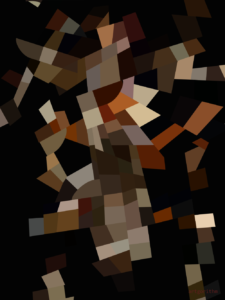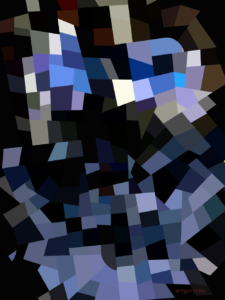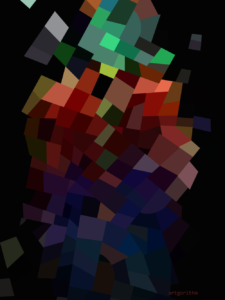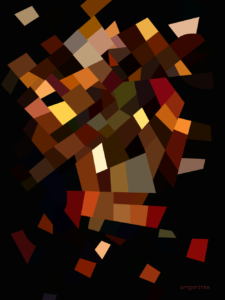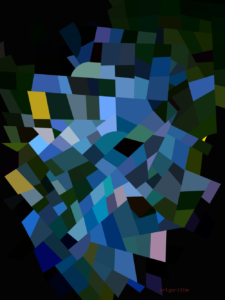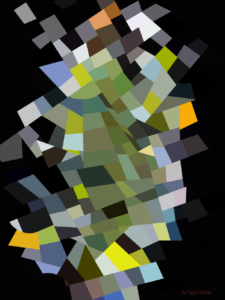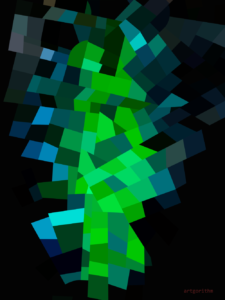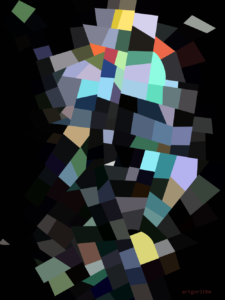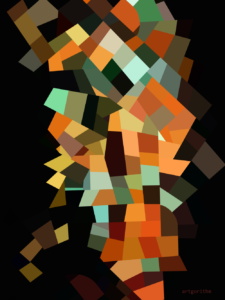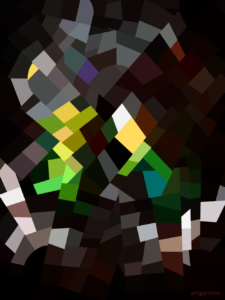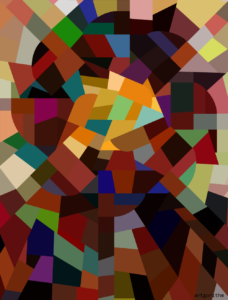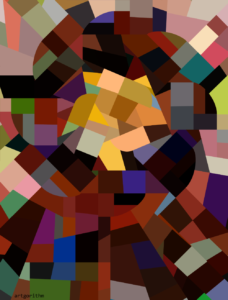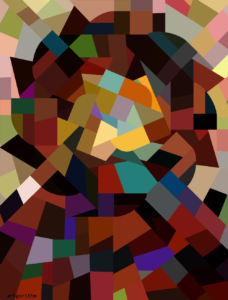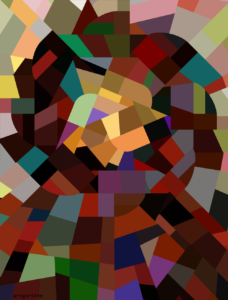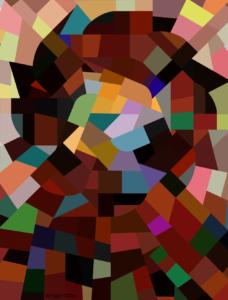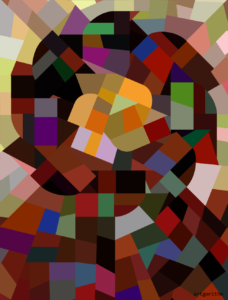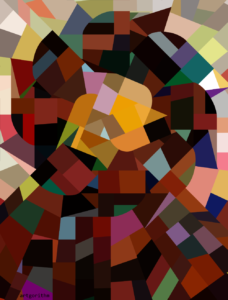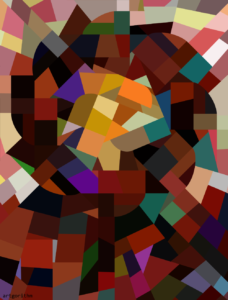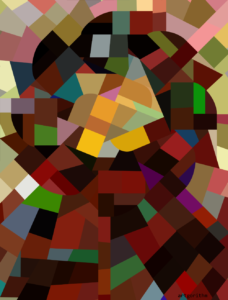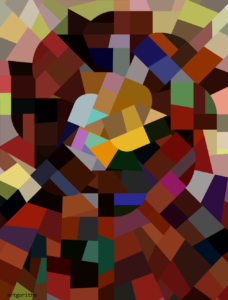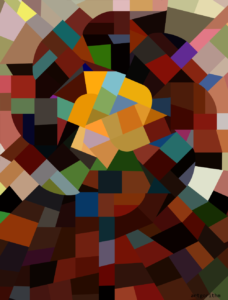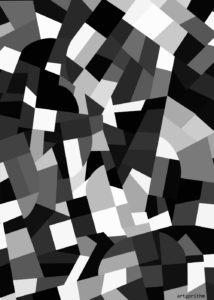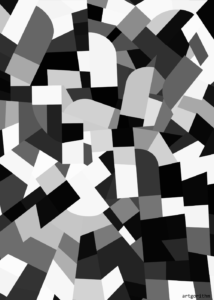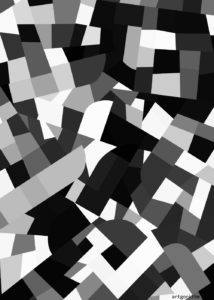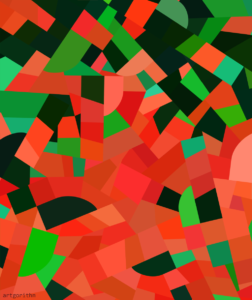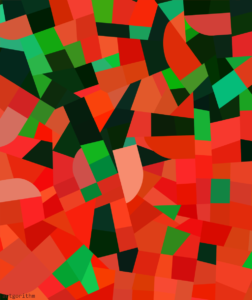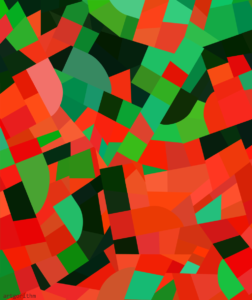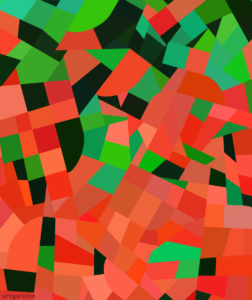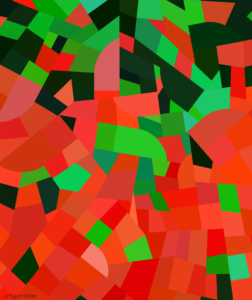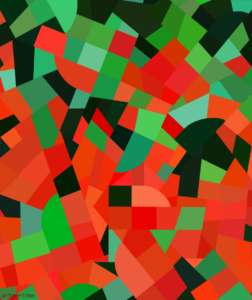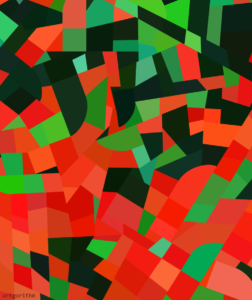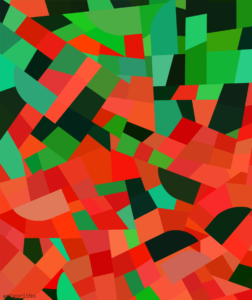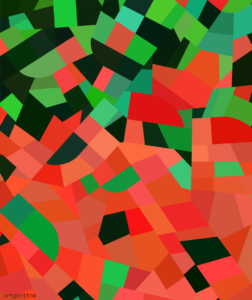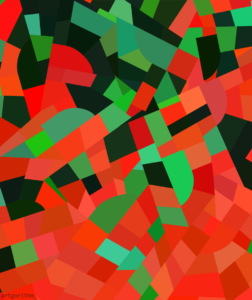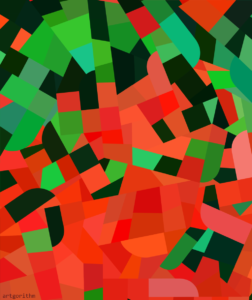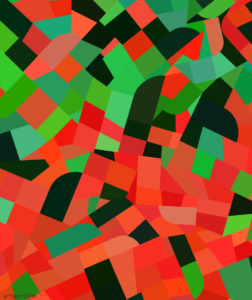The first occurence of the expérience 14: twelve images based on the vocabulary invented by Otto Freundlich.
Category: Otto Freundlich
Des travaux générés par des algorithmes, basés sur l’écriture picturale proposée par Otto Freundlich.
Expérience 14-1.1
Posted onBelow is the first image of a series of twelve from Experiment 14. The image is made by an algorithm that uses vocabulary invented by Otto Freundlich.
Expérience 11-1
Posted onBased on the vocabulary invented by Otto Freundlich, the expérience 11-1 exposes three chosen occurences, results of the algorithm runs with the same identical set of parameters.
With the writing of the algorithm and the choice of the parameters, the selection of the results is one of the main humain interventions in the creation of these images.
Three out of thirty draws were selected.
Rosace II, occurrence 2017
Posted onRosace II is one of Otto Freundlich‘s masterpiece. This painting on cardboard, visible at the Tavet-Delacour museum is the culmination of Otto Freundlich’s mastery of his pictorial writing based on the half-pointed arch and the quadrilateral.
An analysis of this artwork can be found in Otto Freundlich: 1878-1943 – Christophe Duvivier.
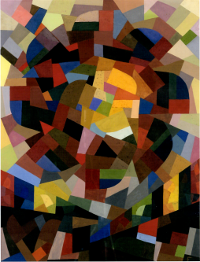
The series of 12 occurrences Rosace II 1941 – 2017 below, generated by algorithm, reinterprets the pictorial arrangement organized by Otto Freundlich.
Composition – 1941, occurrence 2017
Posted onComposition, 1941 is one of the many black and white works painted by Otto Freundlich.
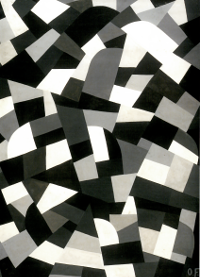
The four 2017 occurrences generated by algorithm use the same balance between black, white and different grey levels of the artwork.
Composition – Rot-Grün, occurrence 2017
Posted onComposition – Rot-Grün is painted by Otto Freundlich in 1939.
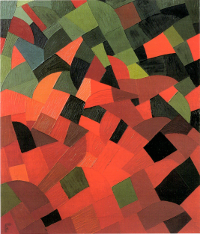
The 12 occurrences 2017 generated by algorithm use the same pictorial arrangement of this painting.
Composition – Diptyque, occurrence 2017
Posted onComposition Diptyque, Otto Freundlich, 1937 is one the first example of the perfect mastery of the arrangement of the two basic shapes used by Otto Freundlich — the rectangle and the half-pointed arch — to focus the viewer’s attention on interactios between colors.
This spectacular diptych can be seen at Tavet-Delacour museum.
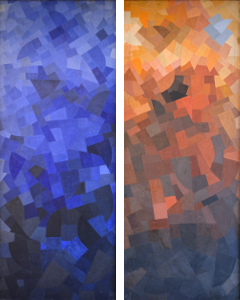
The algorithmic occurence below uses the same pictural dynamic.
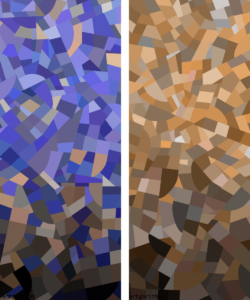
Otto Freundlich
Posted onOtto Freundlich had a special place in the Bateau-Lavoir group of artists when Cubism was created, at the beginning of the 20th century. He will follow his own path toward non figurative art, by granting a paramount importance to each element in the global architecture of its paintings.
His work remains unfinished. Refugee in the south of France during the second world war, he was denounced to the nazi and deported to the Lublin-Maïdanek camp where it was assassinated in March 1943.
Before the First World War Otto Freundlich worked on the restoration of the stained glass windows of Chartres Cathedral. The stained glass art will profoundly influence his works, and perhaps it’s this experience that helps him to invent, in the thirties, the geometric figure at the art of its architectonic writing: the half-pointed arch.
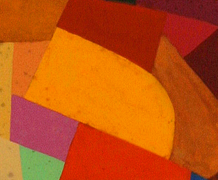
This form generates lines of force in three directions and allows Otto Freundlich to build, from 1937, with a very small vocabulary, rich and diversified compositions, using only half-pointed arches and quadrilaterals.

The architecture of its compositions have two main features: the composition seems not random, and no repetitive structure, no systematic pattern, no algorithmic system emerges from the artwork.
The composition, a geometric abstract painting, appears natural. This global characteristic, created by the influence of each element – and particularly the half-pointed arch – allows the interactions between colors to fully express themselves.
The architecture of the painting is fully at the service of color, and does not distract the viewer.
Occurrences based on the vocabulary invented by Otto Freundlich and presented on Artgorithm are generated by an algorithm that uses the principles described by Otto Freundlich. This algorithm makes it possible to highlight the importance of the half-pointed arch: occurences without this specific figure have a random and systematic aspect that harms the interaction between colors. This algorithm also allow to multiply the series of occurrences based on the same pattern.
Rosace II, occurence 2017 uses the architecture of Otto Freundlich masterpiece created in 1941.

